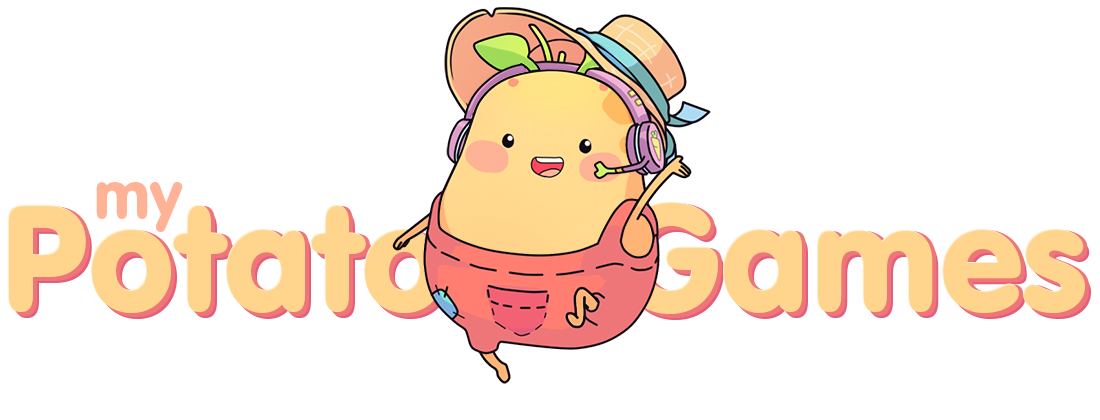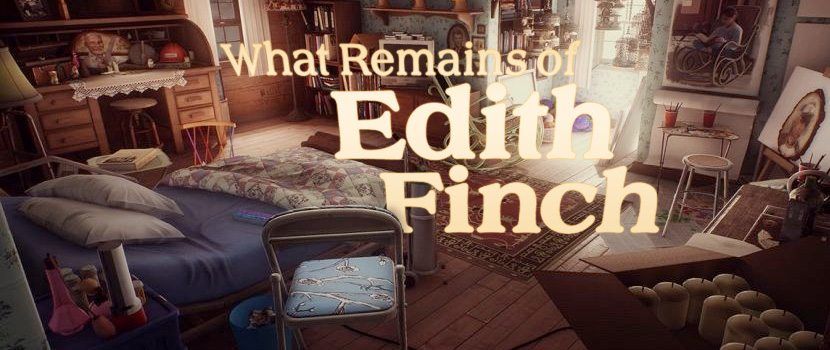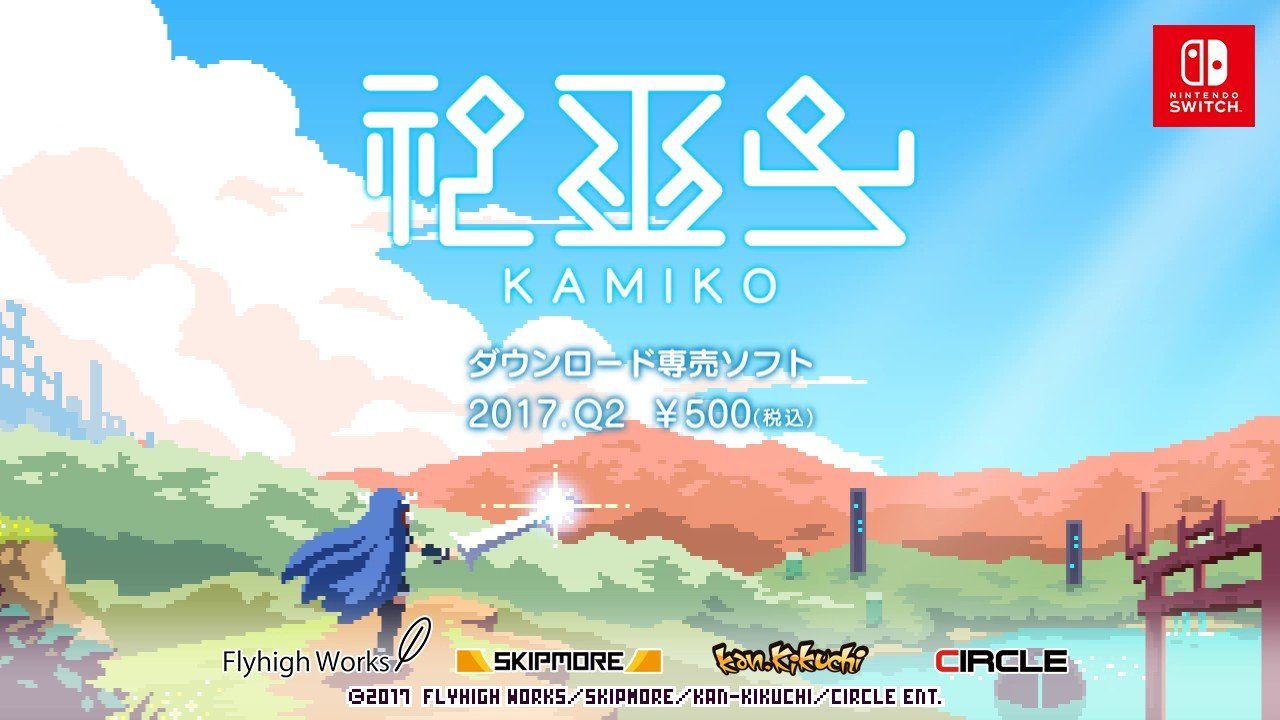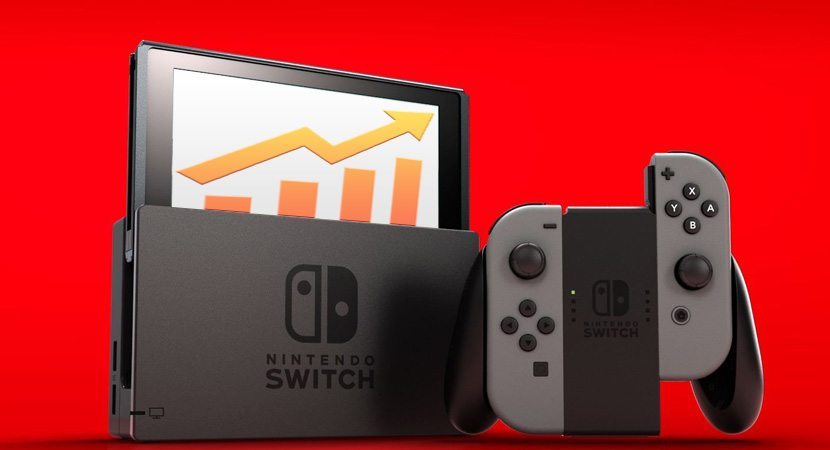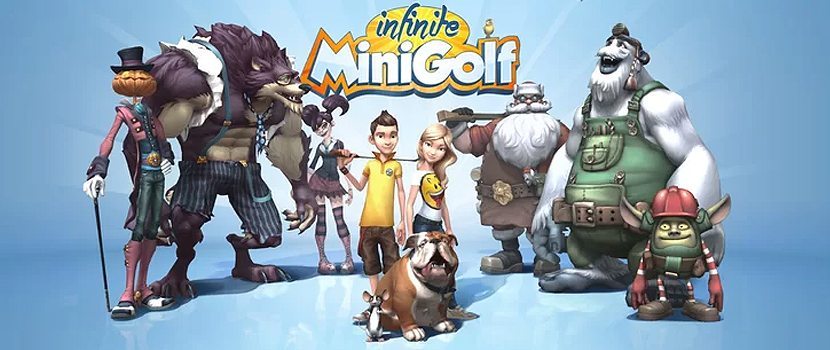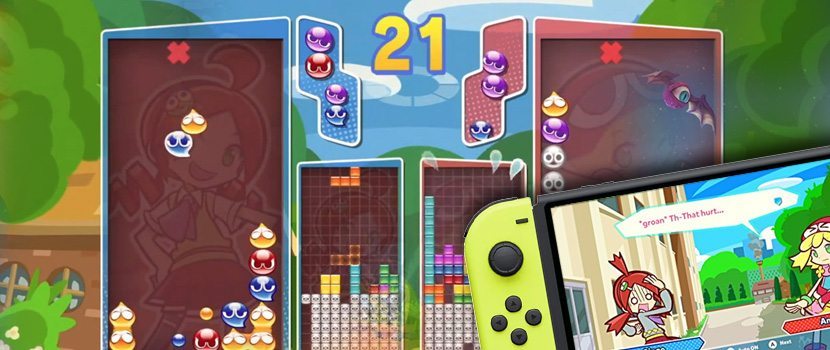Nathaniel
- Home
- Archive
Apr 27, 2017News
[dropcap]W[/dropcap]hat Remains of Edith Finch is a game developed by Giant Sparrow who also made The Unfinished Swan. They seem to enjoy the concept of an interactive storybook, and from what I saw, it works out well for them. You see, this game is all about the story. In Edith Finch, it’s clear that this game is more about discovering the narrative than anything else. The game’s sound design, varied visuals, and the overall mood really work to sell these mysterious circumstances and I feel like it works greatly in the game’s favor.
Story Concept
The game begins on a boat out in the middle of the sea. You immediately have control over the character’s view and look down to read a book written by the title character, Edith Finch. As soon as the story begins, you’re already being presented with mysteries. Not everything will make sense at first, but if you pay attention, you’ll begin to piece everything together.
The story follows Edith Finch as she makes her way through her family’s old house that her late mother would never let her explore. She tells her readers about her childhood living in this house and how as strange as everything was, it just seemed normal to her. Following the deaths of many family members, the mother, Dawn, chose to seal up all the doors in a nearly insane attempt to hide her family from a curse that seems all too real. As Edith makes her way through the house, she discovers the stories of her family members and how each of them died.

There’s a very dark overtone throughout the whole game that just keeps players from ever getting comfortable. Even in some of the more lighthearted stories, the reality weighed me down, making me realize just how tragic everything really was.
The greatest strength of the story seems to be in the discovery, so I won’t go into details as to avoid spoiling the story. What I will say is that I played this game with a couple friends, and while there were great moments that really told us just how dark a story we were getting into, there were also some moments where something happened that just completely broke the mood. While I appreciate the variety in the story-telling styles, naturally, it meant that some would work better than others. As such, it’s understandable that some narrative styles may have cheapened the impact a little. Overall, that’s made up for by the styles that really drive it home, though, so I think it’s a fair trade-off.
Visual and Sound Design
I would feel bad if I brought up sound design and didn’t give credit for the voice acting. I really think the voices and script go a long way in making this story feel more real. Between the voices of the family members telling each of their stories and the writing that reasonably changes in style depending on who’s telling the story. Not only that but the medium through which each story is told changes, as well, typically reflecting the personality or background circumstances of each person. For instance, one story is told through a journal while another is told in the form of a comic book or a series of photographs.
Aside from that, the graphics are decent. While the game doesn’t do anything especially impressive on that front, it does make good use of what it has. The views are worthwhile and the rooms inside the house just get crazier every time.
The actual background music, on the other hand, is gentle and sorrowful. It plays under the narrative, setting a mood without really requiring much of the player’s attention. The only time I remember the music being the focus was right when I started up the game, but it fades and often even disappears altogether, simply keeping you in the moment. It’s the kind of music you might listen to while studying and it works very well, in this instance.
Gameplay
Unfortunately, the gameplay is not where this game shines in any sense. The controls work just fine, though I did find myself stumbling a little bit due to limited space to move my mouse in. It definitely appears that this game sacrifices gameplay for story coherence, but in this case, I think that’s a trade I’m willing to make.
Edith Finch falls squarely into a category I like to call “beautiful walking simulators” where the gameplay is more akin to walking through a museum than anything else. The upside is that it makes a narrative far easier to craft, but it risks losing any players that aren’t just looking for a story. What’s more, the game only lasts about two hours and has next to no actual replayability to it, so you’re effectively paying to watch a movie. Overall, this is definitely the category that hurts this game the most.
Conclusion
What Remains of Edith Finch is short, but sweet. The game really sells its story and mystery, making the player wonder if they might have missed any clues or secrets. However, the game is very heavily scripted and gives the player little freedom to experiment in any meaningful way. The voice acting is definitely great, but don’t expect to be revisiting this game anytime soon. With a $20 price point, it’s difficult for me to argue that it’s worth the money, but if the intriguing narrative piques your interest, please pick this game up on the PlayStation Store or Steam for Mac and Windows.
Apr 26, 2017News
[dropcap]T[/dropcap]omorrow, SKIPMORE is going to drop KAMIKO, a 2D action-adventure game, on the eShop. There’s a lot about this game that’s not obvious from the title or description. Lucky for us, this game has already been out on the Japanese eShop for two weeks. So once again, we’ll be giving you an idea of what to expect if you choose to pick it up.
Gameplay and Objective
If the gameplay looks familiar to you, there’s a good reason for that. This game takes a lot of pointers from the Zelda series. In particular, this game seems to have extremely similar combat to A Link to the Past.
From the start, this game allows you to pick one of three characters to use, each with a different weapon of choice and abilities. Hopefully, that’ll add some great replayability because all reports thus far attest to this being a very short game.
Levels appear to have a rinse-and-repeat format of looking for four gates in each level to open the way to a boss encounter. Monsters appear suddenly as you wander around each level, and secrets and puzzles are everywhere.
Graphics and Sound Design
While KAMIKO reminds us of Zelda in the gameplay department, the look and sound of the game share far more in common with indie classics like Cave Story. There’s a bright feel to the sprites used in the game. The music is in chiptune, similar to VVVVVV. I definitely think some of these songs will be stuck in my head by the time I finish this game.
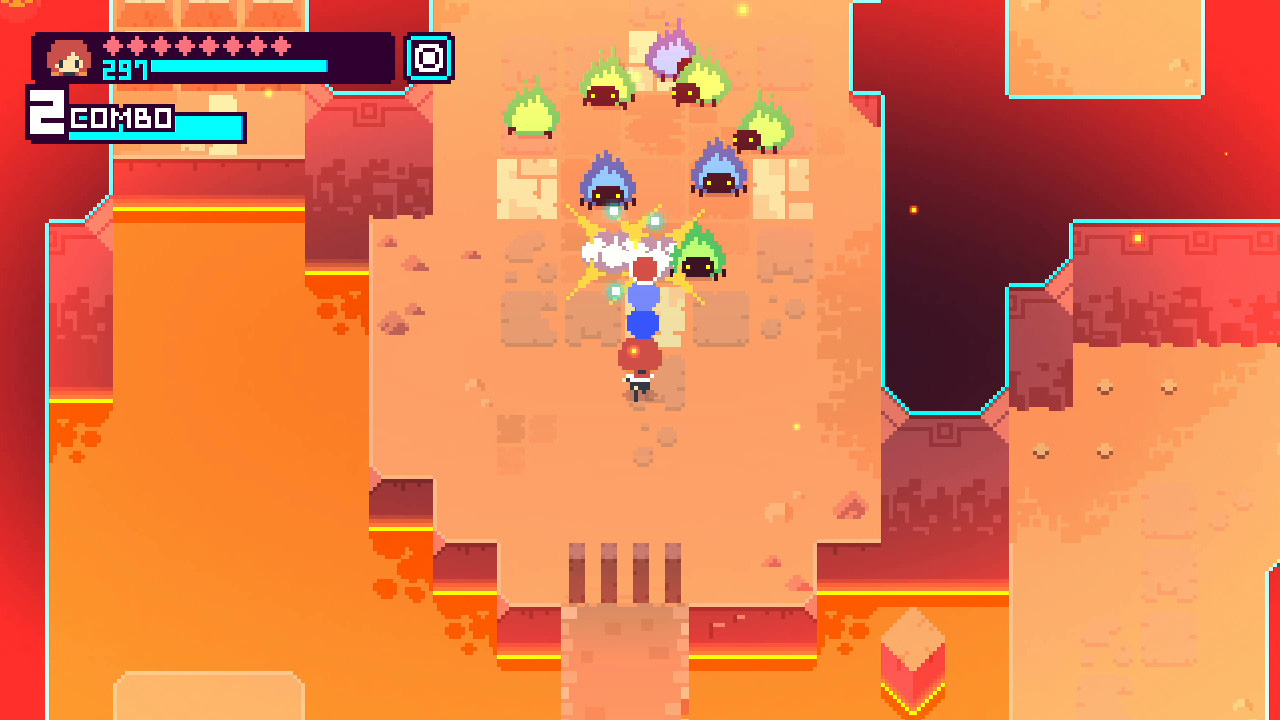
The art style is pretty cute, actually.
Thoughts on KAMIKO
KAMIKO is a 2D top-down action-adventure title with simplistic graphics, chiptune tracks, and a Zelda-like feel to the gameplay. It’s being published by Flyhigh Works and was developed by SKIPMORE. The title has a low price point at just $4.99 in the US, which makes up for the lack of length to the game. That length doesn’t necessarily hurt the game, though, as it seems very replayable, and can easily give new players at least an afternoon of good times.
KAMIKO makes its way onto the Nintendo Switch eShop on April 27th. We’ve linked gameplay of the first level below for anyone that wants to know more.
Apr 25, 2017News
[dropcap]T[/dropcap]akashi Mochizuki, a writer for WSJ Tokyo, has recently tweeted out sales predictions from Macquarie Group suggesting big things for Nintendo’s future. Mochizuki’s tweet gives a bunch of information on Macquarie Group’s predictions.
Macquarie ups its Switch sales view from 11m to 14.5m in FY3/18, software attach rate to 2.8x from 1.8x; expects DQ11 Mar/Apr, MH5 Feb/Mar.
— Takashi Mochizuki (@6d6f636869) April 25, 2017
What Does It All Mean?
Breaking this down, Macquarie predicts that the Switch will sell 14.5 million units between March 2017 and March 2018. This is higher than their previously estimated 11 million units. They also estimate that on average, players will own 2.8 games for the system, up from the 1.8 average they previously gave us.
It’s interesting that Macquarie suggests Monster Hunter 5 and Dragon Quest XI will be launched early, next year. Square Enix has been reassuring us that DQ11 will be out this year. As a result, this prediction gives us the same vibes that Breath of the Wild did when Nintendo swore up and down that the game would be out last year and the year before that.
In the past, Sony has been rumored to have gotten the rights to Monster Hunter 5. In that case, the Switch would only get a portable version of the game. Given the success of the series on handhelds, this doesn’t seem like the worst news. This tweet doesn’t really seem to confirm or deny this rumor, but it’s something to keep in mind!
We urge our readers to remember that this information should be taken with a grain of salt. This isn’t concrete info, but a prediction by a third party and they have been wrong, before. The exciting thing is what this might mean for Nintendo’s E3 plans, as they’ve assured us, E3 will be big. The increase in sales predictions may support that claim, and the increased attach rate prediction suggests Nintendo may have some killer titles up their sleeve. Only time will tell! We’ll sure to keep an eye out for this information at E3 among anything else that might be of interest!
Apr 25, 2017News
[dropcap]Z[/dropcap]en studios, the creators of Planet Minigolf and Zen Pinball, are at it again with a new title called Infinite Minigolf. The main feature of the game is the course editor, which we get to see in the trailer. The idea is that this allows for content to be near limitless. Even better, the developers are making on a system where players can share the courses they’ve made. It helps that players can search for courses based on a given set of criteria.
Based on the developer’s page, it is unclear exactly how this system will work. Even so, the game looks very intuitive in the trailer and course creation appears to be very well laid out. The trailer also displays level themes that look very interesting. Even the character customization appears to be well varied for such a streamlined title. Players will be allowed to add a little variety to pretty much any aspect of the game.
Taking a closer look at the trailer, we see that courses can be made with individual pieces and hazards ranging from birds and plants to video game systems can be placed all over the course to try and trip up the players. Also, it looks like you can set collectibles on the course for players to score extra points. Unfortunately, there’s no indication how that’ll play into the overall game, though.
At this time, Zen Studios already has an entire article talking about their game, which will release on Nintendo Switch, Playstation 4, PSVR, and Xbox One sometime this Spring and the game is already out on Steam early access. Zen Studios seems to be listening closely to player input. You can check out their article on their website, linked in the source. The trailer is linked below. If you’re interested, check it out!
Apr 24, 2017News
[dropcap]S[/dropcap]o we’re nearing the release date for Puyo Puyo Tetris on the Nintendo Switch in the NA and PAL regions. The full game hasn’t been released in these regions yet, but it has been out on most systems in Japan since 2014. With it becoming available to so many new players, this may be a good time to review what we can expect from the game when it becomes available to American and European players in the coming week.
While a demo of the game has been on the eShop since the recent Nintendo Direct, it only covers a small variety of gameplay modes, including solo and multiplayer versions of both the Versus and Swap modes. Of these two, Versus mode lets players each choose between Tetris and Puyo gameplay to battle it out with up to four players or against a CPU. Meanwhile, Swap chooses one of the two at random to start with and forces players to swap games after a short amount of time.
It doesn’t seem like much, but this alone can keep people occupied for hours. Many players wondered why they should buy the full game, however, there’s a lot more that you won’t get to see otherwise. You may see some modes sprinkled around the main menu, but aside from the in-game picture there isn’t much to tell us how these modes play. Thankfully it’s out in Japan, which gives us plenty of resources to see how it all works.
First, the mode I was most curious about, Fusion mode, is exactly what it sounds like. This mode combines Tetris and Puyo Pop onto one grid and gives you random blocks of both types. You can only clear the Tetris pieces by filling in a line with blocks, while Puyo blocks can only be cleared by other Puyos. As the game continues, the strategies and timing become more refined and rely heavily on skill to keep from backing yourself into a corner. This game play mode allows for some crazy combos utilizing both styles simultaneously. Garbage blocks can be cleared the same way as they are in Puyo, but perhaps more interestingly, Tetris blocks will crush them when they fall. Any Puyo blocks they pop will reappear on top, but garbage blocks don’t. This should make for some interesting strategies and create some unexpected comebacks.

Fusion Mode in action
There’s also a Party mode where if you lose, the grid resets to empty instead of knocking you out of play. You lose a lot of points for each restart however, which really hurts your chances of having the highest score and winning the match. Like Versus mode, you can pick either Tetris or Puyo playstyle. While you’re playing, item blocks will drop onto the board, and when you clear a line that they’re in or a group of Puyos adjacent to them it activates the item, which can do anything from giving you a bunch of single-block tetris pieces, to making it difficult for your opponent to see their board.
There is a single-player Challenge mode which includes the classic Sprint, Marathon, and Puzzle-type play, but things get interesting in Big Bang Mode. This mode allows you to pick a style between Fever (Puyo) and Lucky Attack (Tetris). The game will then set up a puzzle board for your game. In Lucky Attack you must clear a line with every block until there are no more lines to clear, while in Fever, you have to build the board up so that when you start clearing Puyos, the chain doesn’t stop until you’ve emptied the entire board. It looks challenging, but with practice, players can hold their own against an opponent. At the end of each timed match, whichever player performed the best will inflict damage on their opponent and drain the health meter at the bottom of their boards. The last man standing wins.
This last mode for the full game is somewhat hidden. When playing alone, you can choose to challenge not one CPU but all of them in a continuous gauntlet-style game that continues until the player finally lose a game. It’s like a survival mode, challenging you do see how many CPUs you can beat.
That’s all the modes I can find as of right now. The game launches on the Nintendo Switch and Playstation 4 in North America on April 25th, and in the PAL region on April 28th. It looks like it’s a fun puzzle game that can entertain for hours, whether you’re playing with a group of friends or playing by yourself, and should definitely be considered for people who are fans of either game. Below, you can find the trailer for the game on the Nintendo Switch. Enjoy!

